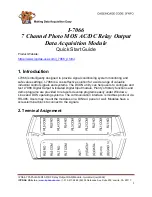
10
4
PUMP INSTALLATION
4.1
MECHANICAL INSTALLATION INTO SYSTEM PIPEWORK
The pump is packed in a double cardboard box to ensure protection during transport and handling in the plantroom.
Once the box is open, use the plastic handles to lift the pump out of the box or lift it holding the drive heat sink.
Pumps are designed to be mounted on the pipework with connecting flanges using screws in each flanges holes to ensure
water tightness between the pump and the mating pipwork. The pump flanges are designed so the pump can be installed
in PN6 or PN10 nominal pressure pipelines up to DN65. Because of the combined flange design, washers must be used
on the pump side, when installing the pump.
For the pump to operate with minimal vibrations and noise, it should be installed into the pipework with its axis (or shaft)
in horizontal position, as showed in figure 1.
The small rectangular openings at the base of the motor (showed on Fig.1, point A) are designed to prevent any
condenation forming inside the motor. These should be left open and not covered (for examples, pump clading should
not covers them).
Fig.1
Desired controls orientation can be achieved by rotating the pump head (pump positions shown in figure 3). Pump
head is mounted to hydraulic casting with four screws. By unscrewing those, the pump head can then be turned (Fig.2)
.
Fig.2
1. Unscrew the
pump head from
the pump casing
2. Gently pull the
head out a little. This is
to avoid damaging the
pump body gasket.
3. Rotate the head to
the desired orientation.
Note that the Electrical
connection should not be
facing up.
Summary of Contents for AGE4
Page 2: ...2...
Page 22: ...22...
Page 23: ...23...
Page 24: ...24 5 4 MODE 2 0 10V...
Page 25: ...25 5 5 RELAYS OUTPUT...
Page 30: ...30...
Page 39: ...39...











































